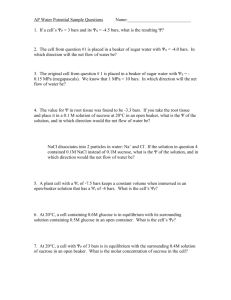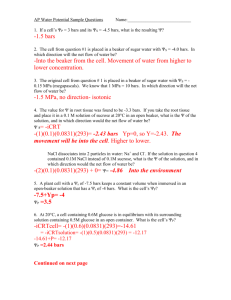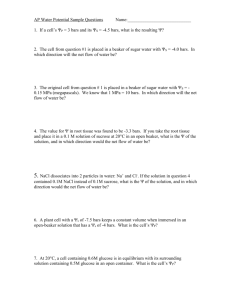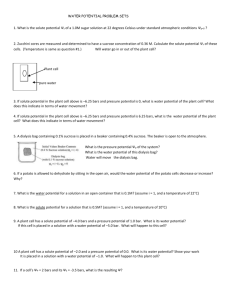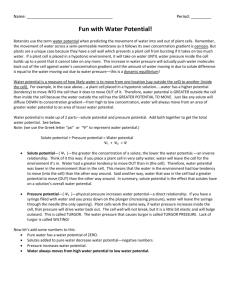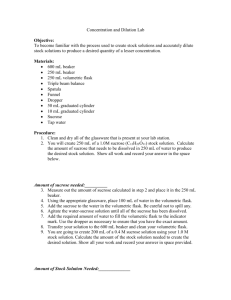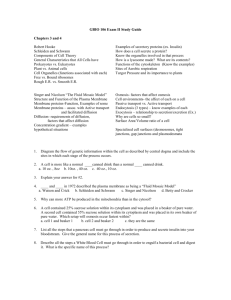AP Water Potential Sample Questions
advertisement
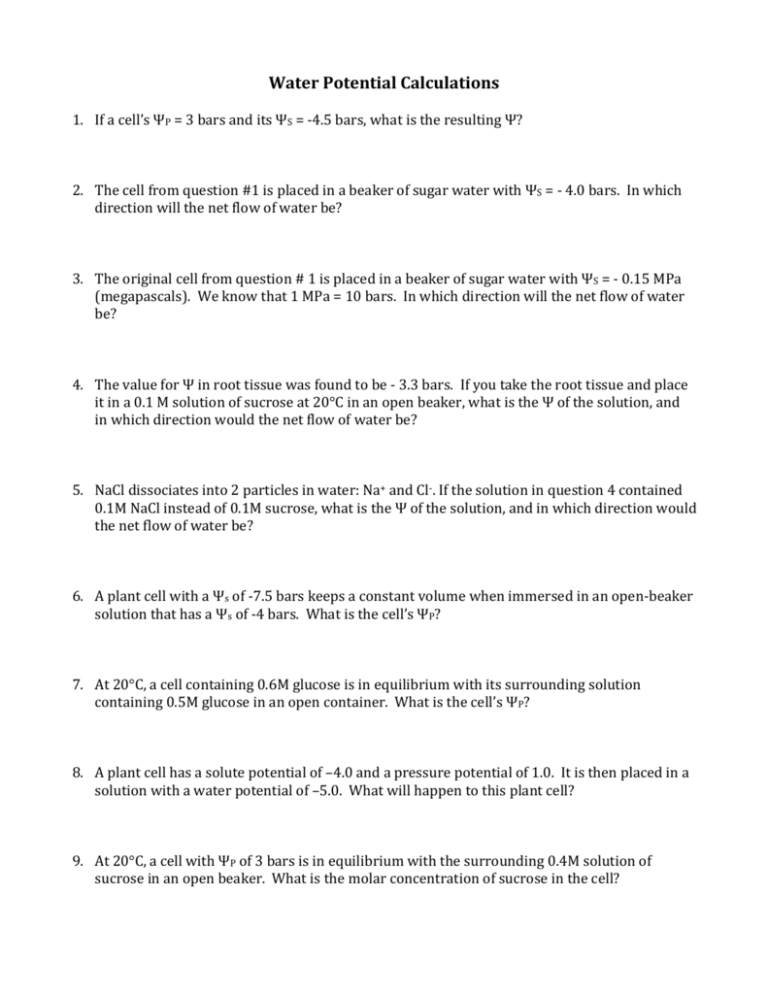
Water Potential Calculations 1. If a cell’s ΨP = 3 bars and its ΨS = -4.5 bars, what is the resulting Ψ? 2. The cell from question #1 is placed in a beaker of sugar water with ΨS = - 4.0 bars. In which direction will the net flow of water be? 3. The original cell from question # 1 is placed in a beaker of sugar water with ΨS = - 0.15 MPa (megapascals). We know that 1 MPa = 10 bars. In which direction will the net flow of water be? 4. The value for Ψ in root tissue was found to be - 3.3 bars. If you take the root tissue and place it in a 0.1 M solution of sucrose at 20°C in an open beaker, what is the Ψ of the solution, and in which direction would the net flow of water be? 5. NaCl dissociates into 2 particles in water: Na+ and Cl-. If the solution in question 4 contained 0.1M NaCl instead of 0.1M sucrose, what is the Ψ of the solution, and in which direction would the net flow of water be? 6. A plant cell with a Ψs of -7.5 bars keeps a constant volume when immersed in an open-beaker solution that has a Ψs of -4 bars. What is the cell’s ΨP? 7. At 20°C, a cell containing 0.6M glucose is in equilibrium with its surrounding solution containing 0.5M glucose in an open container. What is the cell’s ΨP? 8. A plant cell has a solute potential of –4.0 and a pressure potential of 1.0. It is then placed in a solution with a water potential of –5.0. What will happen to this plant cell? 9. At 20°C, a cell with ΨP of 3 bars is in equilibrium with the surrounding 0.4M solution of sucrose in an open beaker. What is the molar concentration of sucrose in the cell? Water Potential Introduction: A student performed a lab where she took some watermelon cores, determined the masses with an electronic balance, and then soaked them in varying concentrations of sucrose solution for 30 minutes in an attempt to determine the concentration (molarity) of the cytoplasm. Additionally, hange in Mass” column. Her data is as follows: Concentration of Sucrose Bath 0.8M 0.7M 0.6M 0.5M 0.4M 0.3M 0.25M 0.2M 0.1M 0.05M Beginning Mass Ending Mass 4.51g 4.63g 4.55g 4.43g 4.44g 4.45g 4.62g 4.68g 4.60g 4.59g 3.85g 4.00g 4.12g 4.20g 4.35g 4.55g 4.61g 4.75g 4.90g 4.99g Change in Mass Questions: 1. Using the data table above, you can estimate the range of sucrose concentration of watermelon. In order to find a more accurate measure, it is necessary to graph the data. Based on your graph, what is the approximate molarity of the watermelon cell according to the graph? Circle the point that tells you this.

